|
Introducing STella This is STella, a 2007 Honda ST1300 PanEuropean. She has been with me since 2010, acquired from the original owner with less than 2000 miles on the odometer and already heavily upgraded. He gave her a Hondaline OEM top box, shipped from Europe at absurd expense (because Honda simply will not sell one in the US, even as a repair part, presumably because they didn't want the ST1300 to cut into Gold Wing sales). He put a Sargent seat on her, add-on fork flood lights, additional HyperLite LED tail lights, and unfortunately for him, a gigantic windscreen made by Rifle; which, it turns out, was the reason I was able to get STella from him. The first day out on the freeway, she nearly threw me off. At 70 mph she was suddenly almost uncontrollable. The front tire was trying to lift off the pavement. The giant Rifle windscreen was making such tremendous vacuum above the handle bars, the front end was being pulled upwards almost lifting the front tire off the ground. It scared me...and clearly it had scared him, so he just didn't ride her. I did a little research, found a high-tech, wind tunnel-designed, AeroFlow windshield for her. Like the ST riders who had already put one on their bikes, found that I could now easily run her up to 110 mph and she was now solid as a rock. (They say she can hit 155, but I haven't tried it!) With that problem solved, a series of upgrades followed that turned STella from a great touring bike into a fantastic touring bike. (She got an AeroFlow headlight shield at the same time, so her headlight is still showroom fresh.) The next major personality change was a set of Gen 3 Helibars, that raised and moved the grips much closer to the rider, eliminating the tiresome problem of having the rider's weight resting on his palms like you would on a sport bike. On the first day ride with the Helibars, I knew STella and I were now a match made in heaven. Then both grips got Throttle Boss palm rests added, eliminating the usual strain on the web between thumb-forefinger wrapped around the grips. Next she got Throttle Meister throttle lock / bar end weights that enables highway cruising with the rider's right hand in his lap. She got huge PIAA driving lights on powder coated billet aluminum mounts, and all the bulbs in the headlights, flood lights, and the driving lights were upgraded to PIAA's 2x bulbs. They produce 2x the light for their electrical wattage...so the high beams, for example produce 140 watts of light each, but each consume only 70 watts of power. The flood bulbs consume 35 watts but each produce 70 watts of light and the driving lights are also 140/70 units. STella makes her own daylight now. She got a Stebel 140 db air horn that hurts if you don' t have your helmet on, along with an additional horn relay that not only sounds both the stock horns and the Stebel horn all at once, when you hit the horn button, it also lights up every light on the front of the bike, whether they are otherwise turned on or not. Honking the horn button is to invoke sunrise. She got modulators on the headlights and flood lights that can be activated or deactivated in any combination with a bank of switches mounted in a neat row under the speedo cowling. If you have never ridden with headlight modulators, try them soon. You will never go back. Drivers don't just notice you...they dodge to get out of your way. In addition, a tricky switch was added that allows the headlights to be locked on High Beam while the handle bar dimmer switch activates and deactivates the driving lights, perfect for those late night runs on divided Interstates (don't use them that way on non-divided highway). She got a amber Zenon strobe light on her tail with a custom controller that shuts down the strobe any time a brake light or turn signal lights up...and automatically turns it back on 10 seconds after the last brake or signal light goes off. Numerous times drivers have pulled up and thanked me for that strobe light. (One guy caught up with me in an east Texas gas station about midnight one night after I had been parked there over ten minutes for a gas and bathroom stop. He said he had been watching me crest the rolling hills from over ten miles behind me for more than an hour.) Those happy drivers all said they loved being able to easily spot STella out in front of them, day or night. And speaking of turn signals, she got and auto-canceler installed so you will never ride down the street with a blinker stuck on because you got distracted and forgot to turn it off. She got a slick set of hideaway Highway Blades (fold out highway foot pegs) and some massive tip-over bars (that proved their worth when she got knocked over when a car backed into her while parked, and the saddle bags didn't even get a scratch). She got a FendaExtenda (an add-on lower lip for the front fender) that helps keep rocks and other road debris from hitting the radiator. She got a smart EarthX brand Lithium battery (which has a native voltage of over 13V so it REALLY spins the starter with authority), and the specialized battery tender designed specifically to manage lithium smart batteries, as well as a custom volt meter / amp meter so you can see how your electrical system is doing at a glance as you ride. She got a tire pressure monitoring system that keep you constantly updated on the current pressure and temperature of each tire that sounds an alarm if they go out of spec. And those tires, always top line Michelins, are always balanced with Ride-On balance / sealant gel, substantially reducing the chances of a flat in the middle of a trip. She has nylon straps secured to the frame, tucked away under the seat, perfect for tying down big duffle bags full of camping gear for those long cross country trips...as well as five separate RAM ball mounts and four separate 12 V accessory outlets to run any phone, GPS, radar detector, radio, or heated clothing any rider could possibly want. To top that all off, she has powerful grip heaters that keep the rider warm even when temps drop into the 30's. While under my care she has had countless oil changes (Castrol synthetic), Iridium NGK spark plugs, synthetic brake & clutch fluid changes, coolant changes, final drive oil changes, K&N air filter changes, tire changes, new fork seals and oil, EBC brake pad changes, and every other normal maintenance item the book requires. In addition she has gotten a new alternator, fuel pump, ignition coils & wires...and less than 50 miles ago, a complete new clutch (despite being only 25% worn from new), water pump (which was not leaking), instrument cluster, and a full set of front wheel, rear wheel and rear hub bearings, a new windshield drive mechanism (electrically raises and lowers the windshield with a thumb button), and a brand spanking new AeroFlow windscreen,…plus all new fluids. She still has her original owner's manual and the Honda Factory Service Manual...as well as a complete record of every service and every part replaced. Here maintenance log can be seen here. Magic on Two Wheels
STella is incredibly capable and very well traveled. She has run up the backbone of the Rockies all the way to Wyoming, into Seattle, down through Oregon, Idaho and Utah. She has been to Chicago several times while meandering through the Ozarks. She has crossed the Mississippi and the Ohio repeatedly, memorably at the St Louis Arch. She has run the Blue Ridge Parkway and the Mississippi Delta. She has made weekend trips into the mountains of New Mexico and knows the Twisted Sisters by heart. Her top box and saddle bags giver her more luggage space than a Gold Wing. She even has a color matched high capacity magnetic tank bag that adds even more space. She is among the most quiet bikes on the road. Flying down the highway at 80, sitting in a still air bubble behind the AeroFlow windscreen, about all you hear is the wind rushing by. If you want to go farther, faster, more comfortably than just about anybody else on the road, STella is the way to go. So why are STella and I parting company? It is not easy to say, but she needs a younger man. She has been my faithful companion for over 12 years... but I have not aged as well as she has. There is simply no way around the fact that when STella is stopped, she is heavy. Once she starts rolling, the weight disappears, but when it is time to put a foot down, it becomes clear that all that magic does not come for free. Tipping the scales at about 750 lbs. dry, her big 125 hp V-4, her two-level 7.5 gallon tank, full saddle bags and top box, all combine to make it clear she requires an experienced rider and constant vigilance to keep her upright. It is not difficult, but inattention is quickly punished. And if she starts to tip, she needs a rider with some manly muscles to keep her in check...and the simple truth is that at 67, mine are starting to fade. We need to go our separate ways before I hurt her. STella has been 77,000 wonderful, adventurous, beautiful miles with me...and is perfectly capable of going more twice that far, as many ST1300's have, if she continues to get the careful maintenance she has had. She is going to meet some guy in his 40's or 50's who is ready to go chase some sunsets for another ten or twenty years with her...and she is gong to make him very happy. With a little luck, I will get to continue to be her favorite mechanic as she continues her journey. I had never heard of a Honda Ascot when the tow truck dropped this little gem on the driveway. It was, in the early 80's, an absolute technology showcase in a mid-size package. She has a 6-speed transmission, shaft drive, mag wheels, liquid cooling, studs on the rear fame members designed to hang detachable hard bags, and even a warning light on the dash to tell you if your tail light has burned out! Remarkably, they didn't sell worth a darn and were produced only two years. In the end, Honda dealers flushed these bikes onto the market at fire-sale prices. Their only real problem seemed to be that the gas tank was a little to small for a bike that would have made a great lightweight touring bike. Look them up. The more you read about the VT500 Ascot, the more impressed you will be. If you find one as nice as this one, buy it for a song and ride it for the rest of your life. As you can see, this one came in very neglected, but not abused. She had spent too much time sitting lonely in a shed. So naturally the carbs were fouled, the battery was toast, the brake fluid was bad, and she needed an oil change. But what was particularly interesting about this job, was that she was on her way to being in a movie...and needed to run right and right away. Being a Honda, parts were easy to get and with the normal Make-Run project ministrations, she was ready to go right on schedule...but when it came time to change her four spark plugs (two per cylinder), she showed herself to be a true Honda V-Twin. I cannot figure out why so many Honda V-Twins are like this, but I see it over and over, across lots of different models they have made. It is such an odd quirk for a company that usually does everything nearly perfectly, I have just got to tell you about it. On lots of their V-Twins, Honda makes it absurdly difficult to change the front left spark plug. Is this a big deal? No, not really. But it can be really aggravating if you don't have the right spark plug socket. And I have seen a number of bikes come in that have clearly had all of their other plugs changed at some point, but the front left plug has never been changed. Some mechanics just skip it, rather than deal with getting the plug out. That is really crummy. So the message here is, if you have a Honda V-Twin, make sure your mechanic is willing to do the job right. (I guess that is good advice, whatever bike you may have!) You may notice that the photo of the long, thin spark plug socket shows lots of scratch marks on the outside. That is because on some bikes, even this special tool was too thick to fit down the hole. So naturally, I took it over to the bench grinder and ground it even thinner! Sheesh! Well, it all worked out fine in the end, and out little hero got a nice bath and made it to the set on time. The script says the rider finds a dead body in the woods. Who did it? Was it Major Mustard with a wrench? 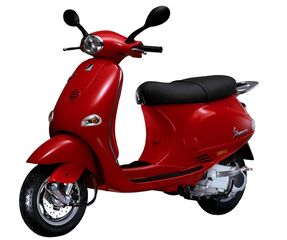 OMG, she is so cute! She is a red Vespa GT4 / 150, a hot little Italian number who just wants to have fun. (Does that make me an Italian Lover?) Well, she wanted to have fun, but she was in a coma when she came in. Her battery was DOA, her tires were far too old to be ridden safely, she needed fresh oil in her engine and transmission, and obviously new brake fluid...but her carb. Oh dear. Her carb betrayed her. Like so many gasoline powered machines, she had been sitting in a garage for quite a while with ethanol-mix fuel in her tank, going nowhere. And while she sat, her carb got more and more filled with gunk (that's a technical term)...but worse, while she sat the carb was discontinued by the manufacturer. Worse still, all support (i.e. repair parts) for the carb were discontinued. What could have been a reasonably inexpensive clean / rebuild became a more expensive carb replacement job. The good news was that the same manufacturer had a substitute carb that fit perfectly and worked perfectly as soon as it was installed. But how do you get all that bad gas out? Well, the fuel hose gets disconnected when you pull the carb, how about pointing it into a bucket and letting it flow? Not so fast, Lover Lips. The tank has a gallon of old gas in it and noting is coming out. What gives? Motorcycle fuel tanks on carbureted bikes have a petcock (a valve) between the tank and the carb. In many cases the petcock is bolted into the tank. In other cases, it hangs below the tank. In any case, the valve controls whether or not fuel flows from the tank into the carb float bowl. The carb has a float valve that is supposed to allow fuel into the carb when the fuel level in the bowl gets low...and stop fuel coming in when the bowl is full enough. You see float bowls in the photos above. They are the bowl shaped pieces bolted to the bottom of the carbs. But the float valve is just a weak and tiny thing and bike manufacturers tend not to trust the valve to prevent every little drip from getting through. You can imagine if it sits for a week, letting just one drop of fuel get in every hour, it is not long before you have a flooded engine. Not good. So the float valve is backed up with an upstream petcock (an upstream fuel valve). Many bikes have a manual petcock. You may have noticed a motorcycle rider walking up to his bike, reaching under the fuel tank for some odd reason, and then turning the key and firing up the bike. That rider was opening the petcock. However, some bike have an automatic petcock. In very rare cases it may be electric on a carbureted bike. In most cases, if automatic, it is vacuum operated. When the engine turns over, the cylinder sucks air in through the carb...and when it does, it creates a little low pressure area (a little vacuum) right at the carb inlet. And that is where a tube is attached that carries that vacuum to the flexible diaphragm in the petcock, that gets sucked back under vacuum, and pulls the fuel valve open, allowing fuel to flow. So...sitting on the lift not running, this little Vespa would not allow any fuel to flow from the tank, into the fuel line that connected to the carb. No vacuum, no fuel flow, no draining the tank. Hmmm. What we need here is something that sucks. Not much sophistication is required. An ordinary syringe provides all the suction required to open the valve when connected to the vacuum port on the bottom of the petcock. A little white plastic fitting was used to connect the fuel hose to a longer piece of scrap hose leading into a disposal bucket and è fatta (it is done). The rest of the work is pretty normal stuff, except that Vespa uses the oddest collection of nuts and bolts imaginable. It is a tiny, lightweight machine, yet it has some of the largest nuts and bolts you will see on a motorcycle. The front brake caliper bleed screw was half as big as the entire caliper. I suppose Italian lovers are know for having a few idiosyncrasies... Her brake fluid was nasty and low, but cleaned up nicely. Removing her rear wheel requires first removing the exhaust manifold and muffler (not unheard of). Getting to the front brake master cylinder required removing the headlight faring (weird). But, her rear brake shoes and front brake pads were just fine. The front wheel is attached with five little lug screws, allowing the brake disk and caliper to remain untouched when removing the front wheel, just like your car does (very cute). Tires were a little bit of a battle. A normal larger motorcycle wheel is a bit easier to mount because the curve of a 17 inch wheel is much gentler than the curve of a 10 inch wheel. The amount of flex require to mount each tire is about the same, but it is a much larger percentage of the tire diameter when the wheel is 10 inches in diameter. A little tougher...but certainly within reason.
So there you have it. The hot little Italian number is back home doing what she does best, making big smiles. What more can a WrenchMonster ask for? Here is a 1989 Honda Hawk GT. It is a mid-size (650 CC) street bike that had a short manufacturing run but still enjoys a strong following. The Hawk has a very elegant single swing-arm rear suspension and a very cool eccentric rear axle carrier that allows for simple chain tension adjustments and obviates the usual sprocket alignment adjustment. The fuel tank is secured with a removable bushing up front. The rear tank mounting bolt is used to extract the bushing from the frame when removing the fuel tank (so cool). The only fly in the ointment on this design is a difficult to access front left spark plug. This is the second Honda V-Twin I have encountered that makes access to the front left plug so difficult that it requires a special tool. Fortunately, the Hawk comes with the required tool and the owner of this Hawk still has the stock tool kit that came with the bike. The Hawk came in able to idle but wouldn't rev up and run. Having been parked with fuel in the tank for a few years, being a carbureted bike, that was not surprising. She had tires with good tread but rotten, cracked sidewalls (very dangerous) so they had to go. Her oil was old, her chain was rusty, her coolant and brake fluid were low and dirty. On top of that the turn signal switch wouldn't work worth a darn. Very sticky. CV-19 made getting OEM parts really slow and difficult, but in the end, everything but the fork rebuild kit showed up. We will get to the forks later. The carbs cleaned up well. The rubber carb mounting boots were original, cracked, and hard as rocks, so they got replaced. The new Michelin tires look great. The replaced brake pads and new DOT4 fluid are working fine without having to rebuild the master cylinders. There were some non-metallic particulates in the old coolant but the flush cleaned all that out. The very elaborate air filter was dirty and got replaced. Some plastic parts, like a fuel line tee and a small foam filter in the pollution control system, simply crumbled when handled, and had to be replaced. That was not surprising for a bike that is over 30 years old. And dismantling the turn signal switch, giving it a good scrub and lube has it working like new. So overall, almost nothing but ordinary maintenance was needed to bring this Hawk back to life. She did need some new bar ends (one, it seems, went missing some time back). But that was obvious. What was not obvious until the test ride, was the voltage regulator was dead as a stick. Motorcycles have alternators. As a rule, they generate 3 phase AC that gets fed to a rectifier / regulator that converts the AC voltage, which may go higher than 60 volts as the engine revs higher, into DC and holds the voltage supplied to the battery to anywhere from 12 to just less than 15 volts (i.e. normal charging voltage for all our cars, motorcycles, scooters and lawn tractors). Most automotive alternators have the voltage regulator built into the alternator housing. But as a rule, motorcycles have a separate regulator that plugs into the wiring harness of the bike. It often looks a lot like the one on the Hawk. It will have three (usually yellow) wires that accept the three phases of AC current from the alternator and two or more wires that deliver the DC current (often +12V Red and Green Ground). That makes diagnosing charging problems pretty easy. If you unplug the regulator and still have AC voltage coming out of all three phases of the alternator (specifically, from the Stator windings) but do not have good charging voltage when you plug the regulator back in, the regulator is bad...and so it was with the Hawk.
When the new regulator arrived, it took a little effort to dig the old one out of its hiding place in the bike, but the new one fit like a glove and worked like a charm. This little Hawk GT rides like a dream and I predict will run another 100k miles...and will probably generate almost that many smiles. |
Categories
All
Archives
January 2024
|
|
© WrenchMonster 2018
|
WrenchMonster™ is a Division of DemonLite, LLC.
|

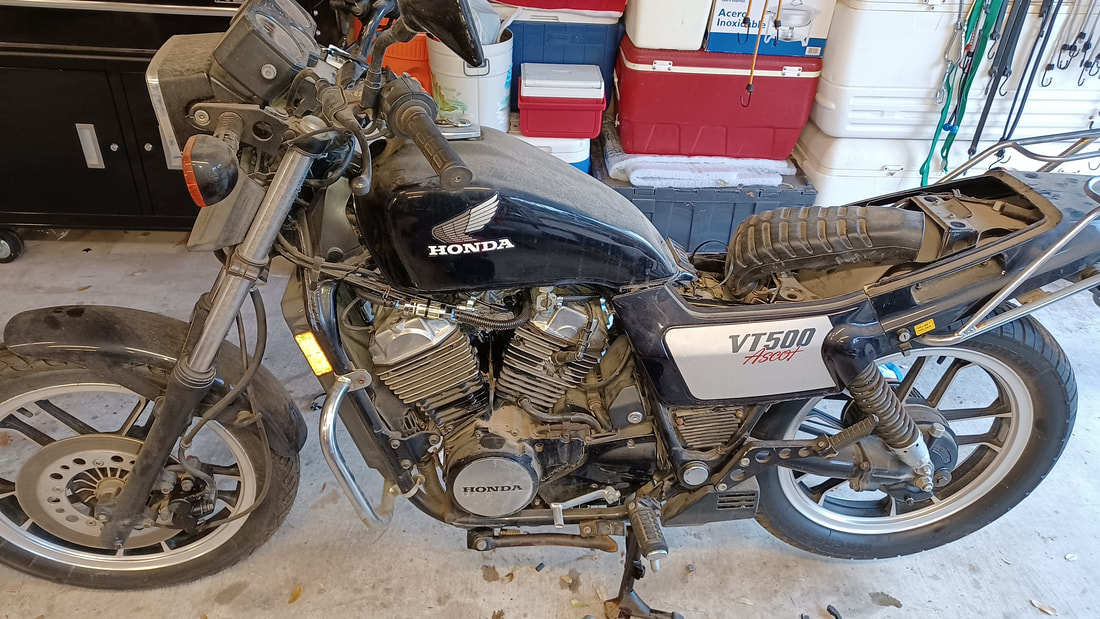
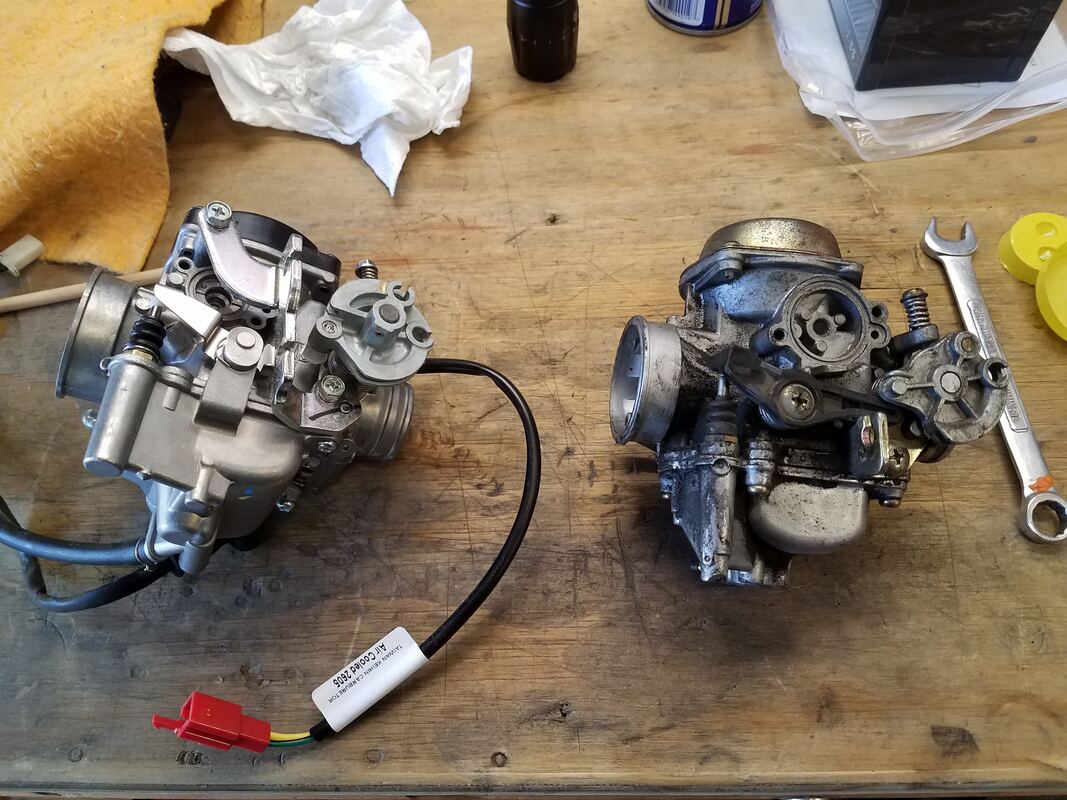
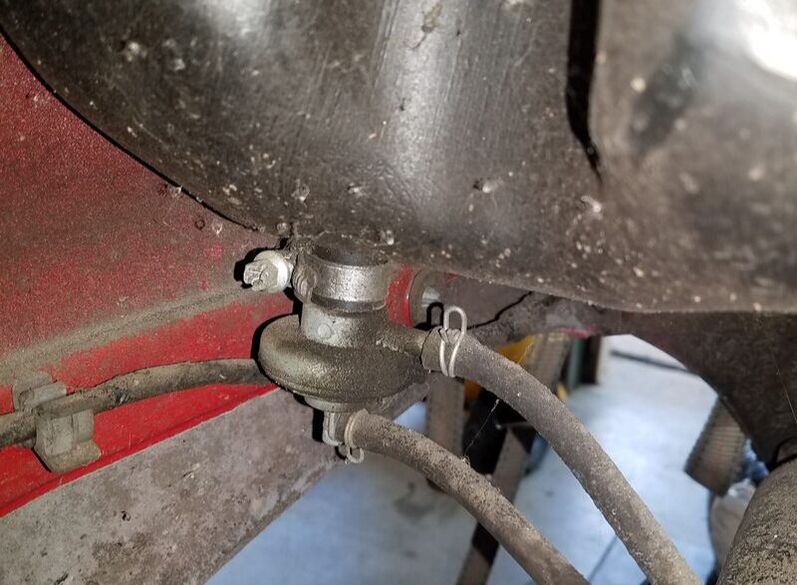

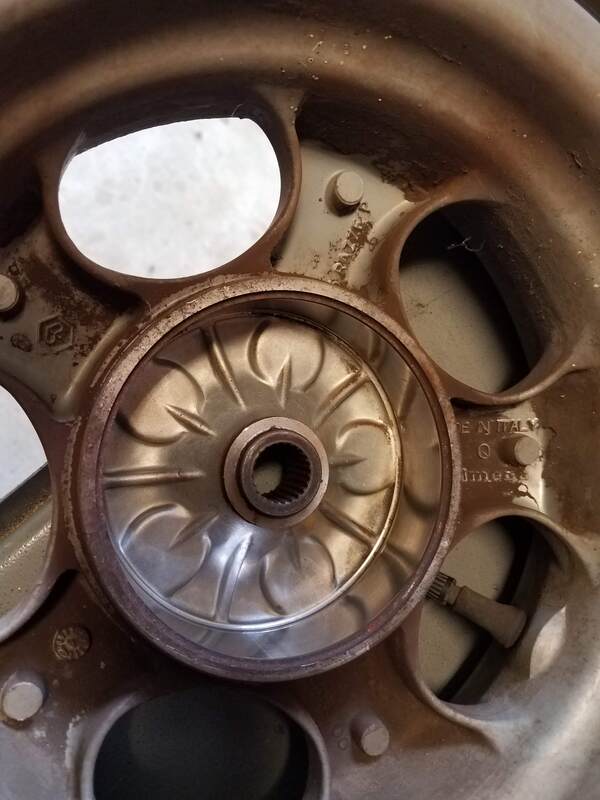
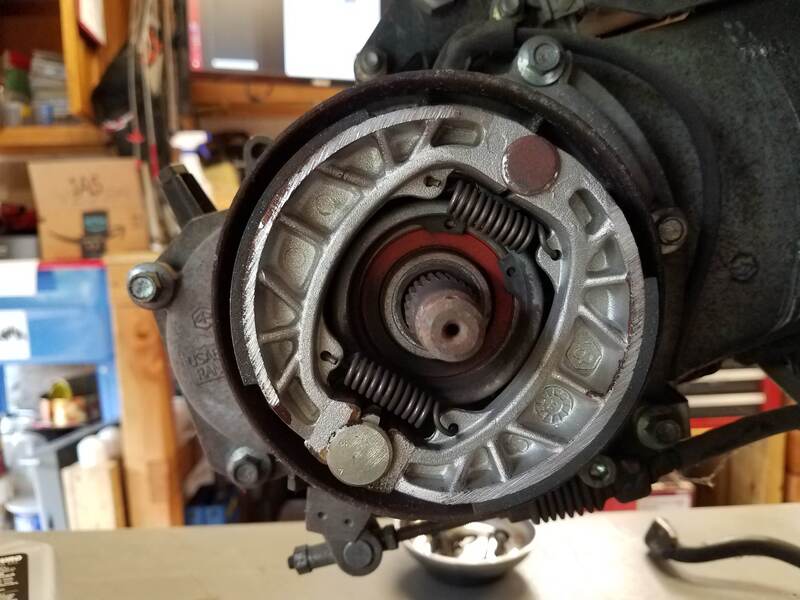
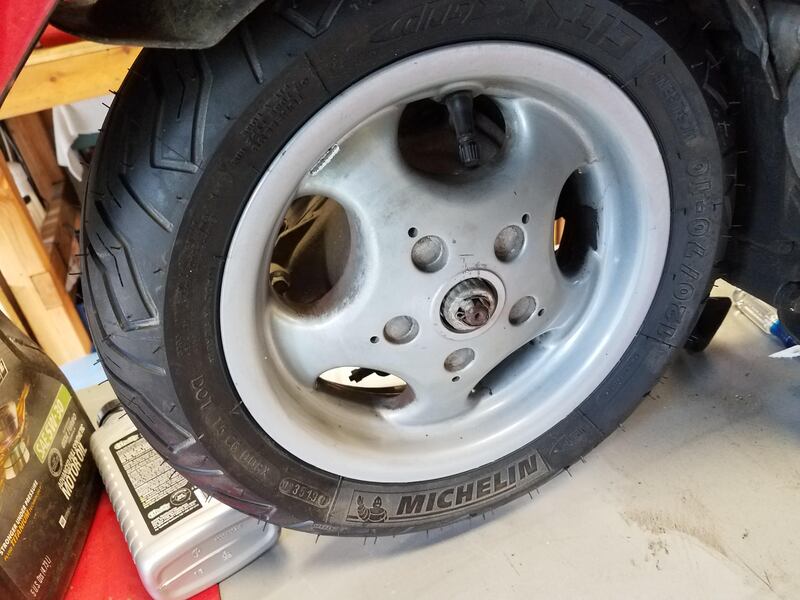
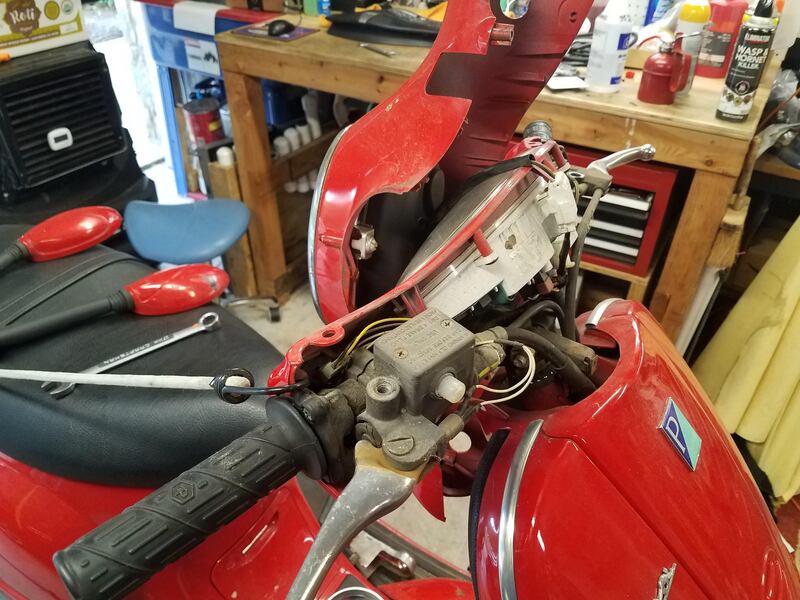
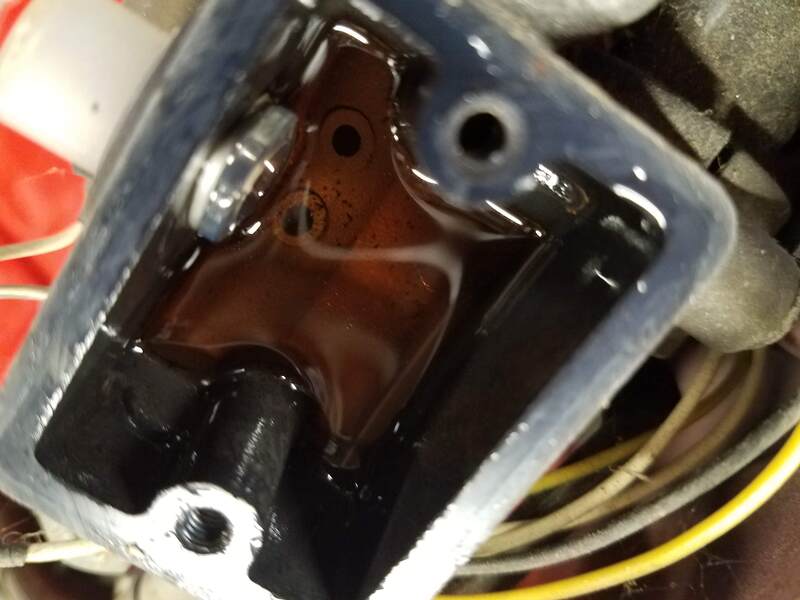
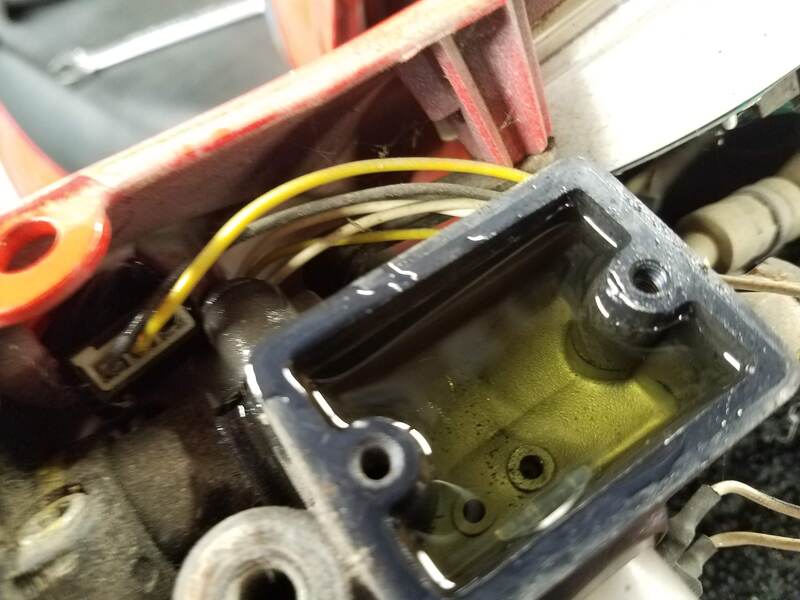
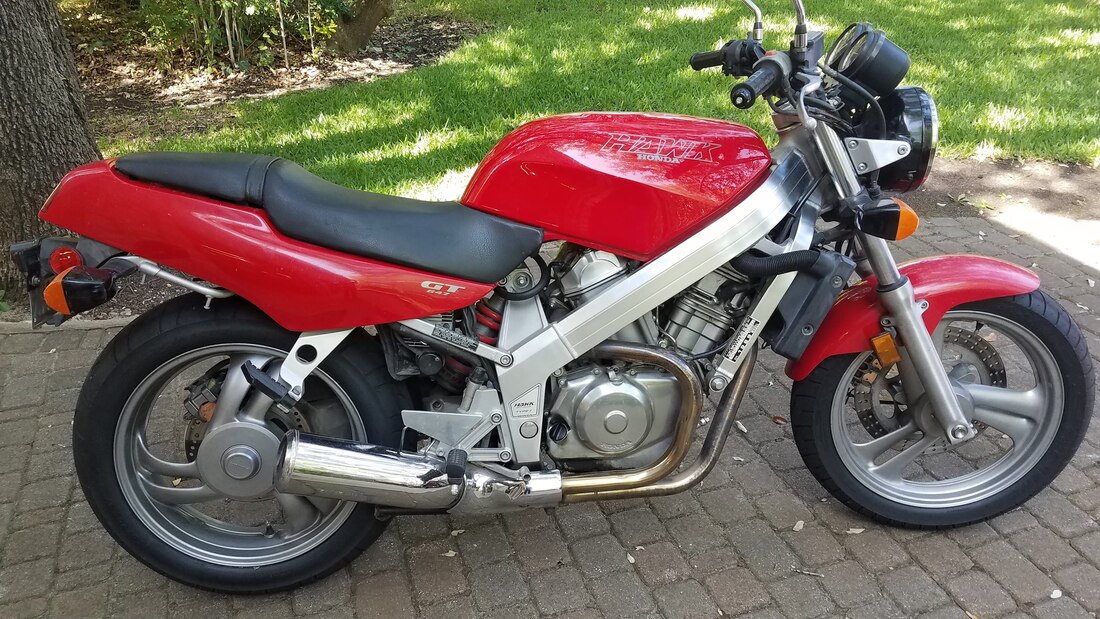

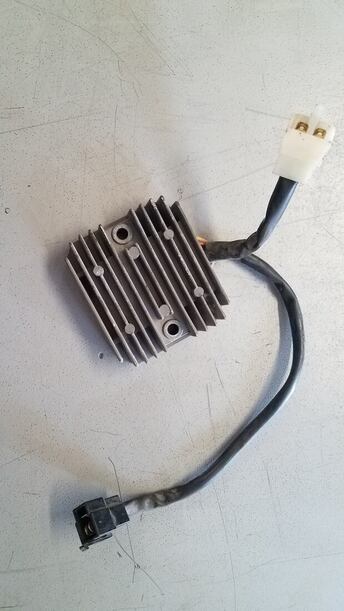
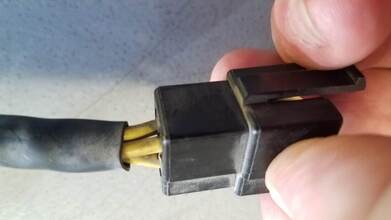
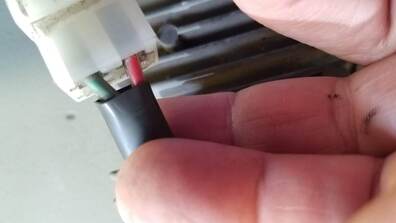
 RSS Feed
RSS Feed